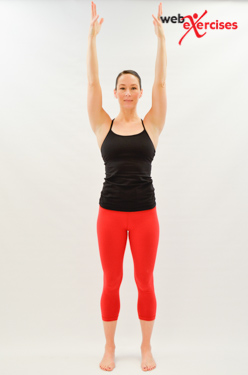
by David Cruz, DC, CSCS
When done properly the squat is a safe and effective exercise that can be used for strengthening your entire body. Performing a correct squat requires the upper and lower body to work in unison activating over an estimated 200 muscles. In addition to musculature stability and postural control, dysfunctional movement patterns can also be identified.
With the #1 and #2 causes for injury being a history of a previous injury and asymmetrical movement, a squat assessment can provide us insight into the compensation patterns leading to a patient’s recurrent problems. The image below from Assessment and Treatment of Muscle Imbalance – The Janda Approach demonstrates this dysfunctional movement and pain pattern our patients undergo.
- Arms extended above head
- Feet shoulder width apart
- Feet pointing straight
- Eyes fixed straight ahead
- Arms stay straight
- No excessive forward lean
- Feet stay pointing straight
- Heels stay on ground
- Knees stay in line with feet
- Knee – Knees buckle inwards
- Potential Dysfunction: Gluteus Medius/Maximus, external hip rotators
- Arms – Arms bend at elbow or sway excessively forward
- Potential Dysfunction: Thoracic or Shoulder mobility
- Ankle – Heels lift off floor, unable to achieve 15-20 degrees of ankle dorsiflexion.
- Potential Dysfunction: gastrocinemius flexibility, talo-fibular joint mobility
- Hip and Low back: Excessive forward lean with upper body and shoulders. Lumbar spine looses neutral spine position and excessively flexes for extends.
- Potential Dysfunction: hip mobility and/or thoracic mobility.

